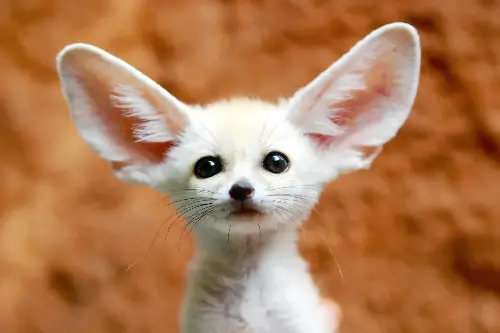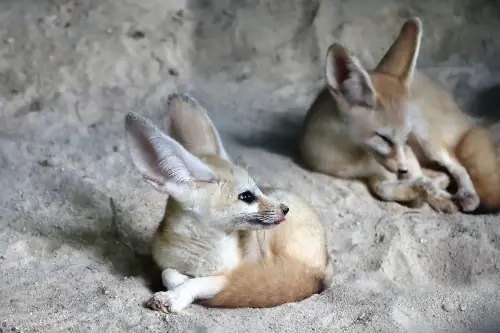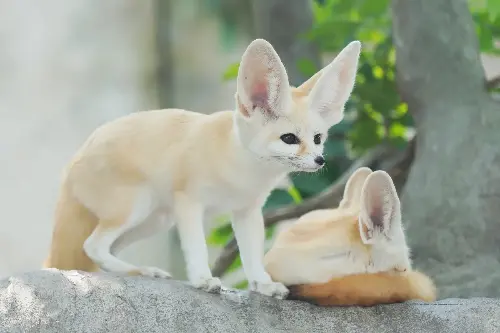Amidst the sweeping dunes and scorching heat of the Sahara Desert dwells a creature as elusive as a desert mirage yet as real as the sands that it calls home—the fennec fox. This diminutive and enchanting canid holds the title of the smallest fox in the world, but what it lacks in size, it makes up for with its remarkable adaptations and cunning survival strategies.
The fennec fox, with its disproportionately large ears that could easily rival any satellite dish, is an iconic figure of the desert. These ears do more than just give the fox its charming appearance; they serve as natural air conditioners. The extensive network of blood vessels in the ears dissipates excess body heat, helping the fennec fox stay cool in the blistering desert temperatures. Interestingly, these ears also give the fox exceptional hearing ability, enabling it to detect the subtle movements of prey beneath the sand.

One of the most astonishing aspects of the fennec fox's biology is its resourcefulness in the face of extreme aridity. These mammals have adapted to survive with minimal water. They obtain most of their hydration indirectly through their food, which is a diet primarily composed of insects, small mammals, birds, eggs, and plants. Their kidneys have evolved to conserve water and minimise waste, a key adaptation in such a parched environment.
As nocturnal creatures, fennec foxes spend the scorching daylight hours in the cool refuge of burrows that they meticulously dig in the sand. These burrows can be quite extensive, featuring multiple entrances and intricate tunnels that provide shelter not only from the heat but also from predators. It's within these subterranean networks that fennec foxes rear their young, often producing a litter of two to five kits after a gestation period of around 50 days.
The social structure of fennec foxes is another fascinating facet of their existence. Uncharacteristic of many other fox species, fennecs are known to exhibit a certain degree of social cohesion. They often form tight-knit communities, which are sometimes referred to as 'skulks' or 'leashes', and display behaviours such as grooming one another and playing together. Such social bonds not only facilitate the sharing of resources and cooperation in raising young but also provide a defensive front against predators like the eagle owl and various large mammals.

Communication among fennec foxes is a symphony of yips, barks, and howls that fill the nighttime desert. Each sound carries a specific meaning, from courting calls to warnings of imminent dangers. Thus, these vocalisations are a testament to the fox's intelligence and social nature.
While fennec foxes are currently not considered an endangered species, they are not without threats. The illegal pet trade poses a significant risk to their well-being. Fennecs, with their appealing appearance, have caught the eye of the exotic pet market, leading to capture and sale that often result in inadequate care and a lifetime of suffering for these wild animals. Additionally, habitat destruction and human encroachment continue to diminish their natural living spaces.
On a more positive note, conservationists and wildlife enthusiasts are increasingly recognising the importance of protecting the enigmatic fennec fox. Efforts are being made to curb illegal trafficking and ensure these creatures continue to thrive in the wild.

The fennec fox remains a marvel of evolution, having honed its existence over millennia to become a masterful survivor of the Sahara. It is a creature that ignites the imagination, reminding us of the resilience of life even in the most inhospitable of places. From its satellite-like ears to its nocturnal habits, every aspect of the fennec fox's life is finely tuned to the rhythm of the desert. As we uncover the secrets of these desert dwellers, we learn not just about them but also about the wonders of adaptation and the delicate balance of our planet's ecosystems.
